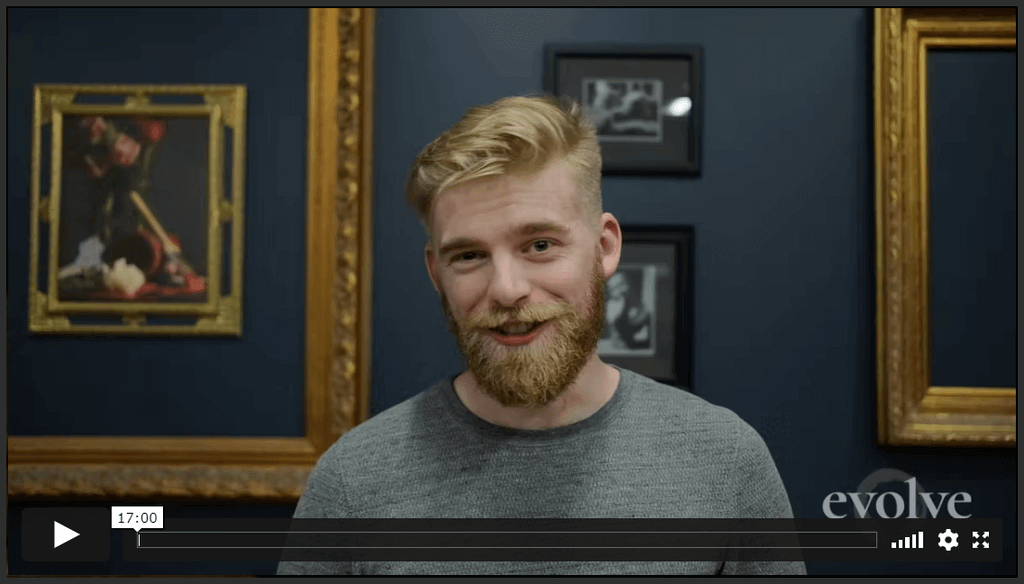Oil Painting Process: The 3 Moving Parts of Any Painting
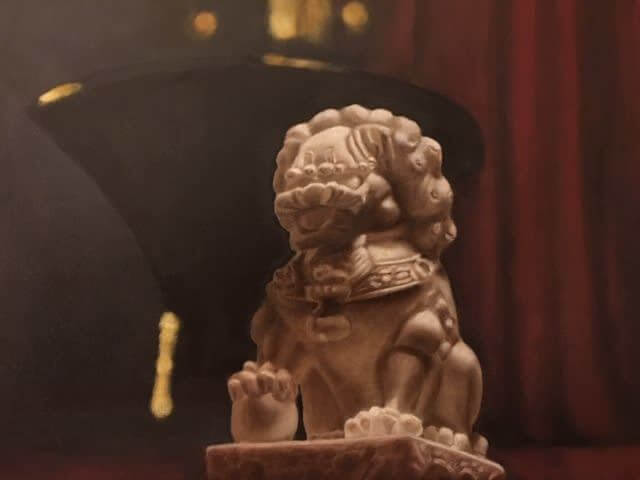
Oil paintings are comprised of three moving parts: value, color, and edge. (Painting by Evolve student Janette M.)
Looking at an accomplished oil painting can seem unachievable for beginner artists. However, every single oil painting process can be broken down into three moving parts, simplifying both the painting and the process.
Although each category has many facets and details to it, oil painting can be broken down into three sections: value, edge, and color. These three parts cover every area of a painting and when understood fully, come together to make mastery level work.
By breaking down a painting’s moving parts at the beginning of their education, students will be able to learn slowly in each section. Then, complexity in each moving part is added as the student learns more.
Keep reading to learn about the three moving parts of any oil painting!
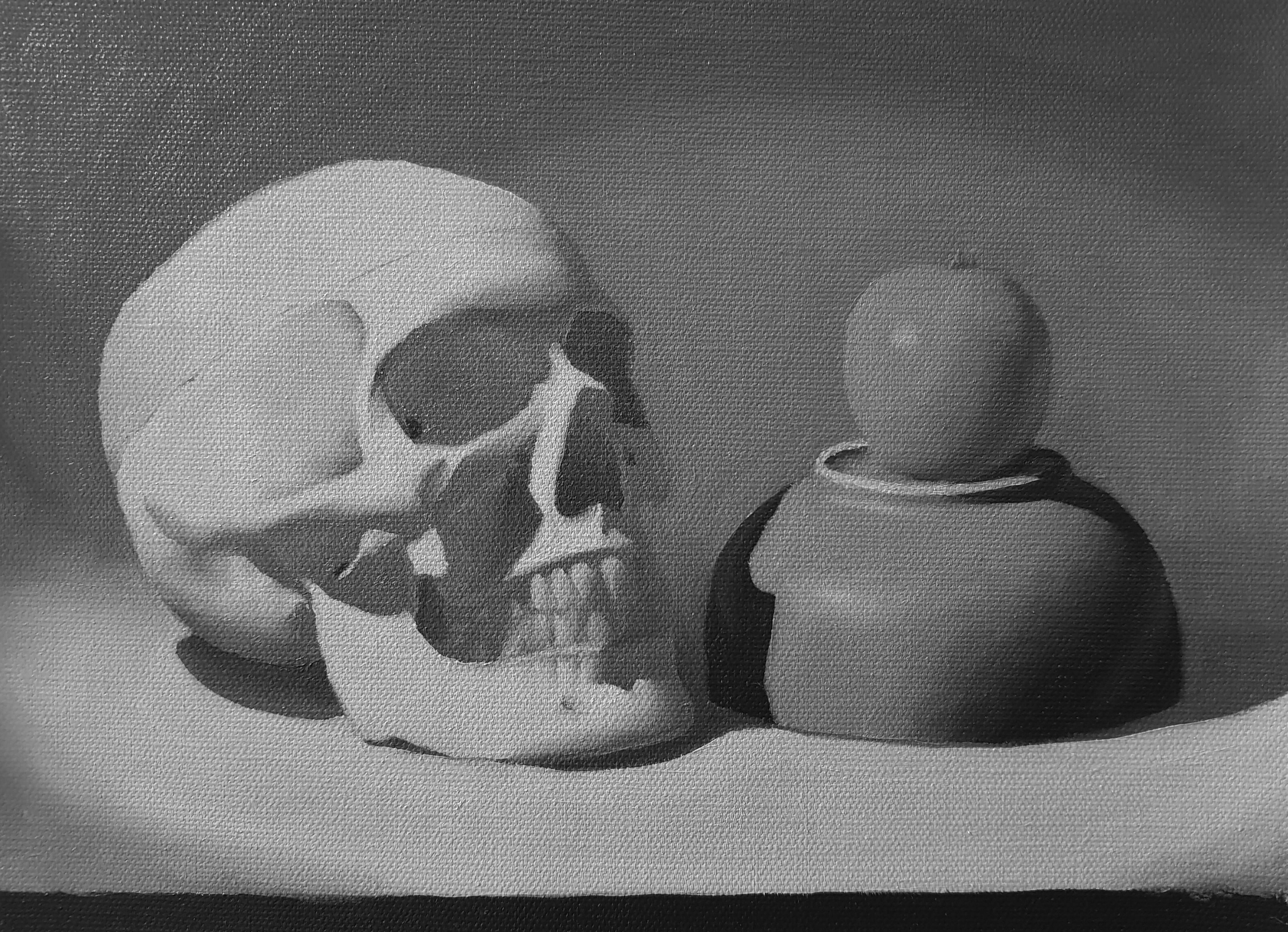
Even in a grayscale painting, properly placed value explains form and dimension. (Painting by Evolve student Mathu W.)
Value
Value in the oil painting process is an essential part of the painting. For beginners, value can be as simple as distinguishing between light and shadow. However, for advanced and master painters, value speaks to the structural elements of a painting and can be very complex.
As humans, we see and understand the things around us mainly based on how dark or light they are. Value can explain form, opacity, depth, and so much more. Because value is such a crucial part of how we see and understand, it is essential that students learn how to handle and express value correctly.
Evolve students begin to learn the moving pieces of value by distinguishing simply between light and shadow. At the beginning of their education, they create paintings with only two light values and two shadow values. This teaches them how to determine light from shadow, and then categorize value within light or shadow.
From this simple start, students expand into reflections, highlights, value in color, and more complex ways of utilizing value to express something in a painting. Value is a critical part of the oil painting process and understanding what it is and how to properly see and apply it should be one of the first lessons a painting student learns.
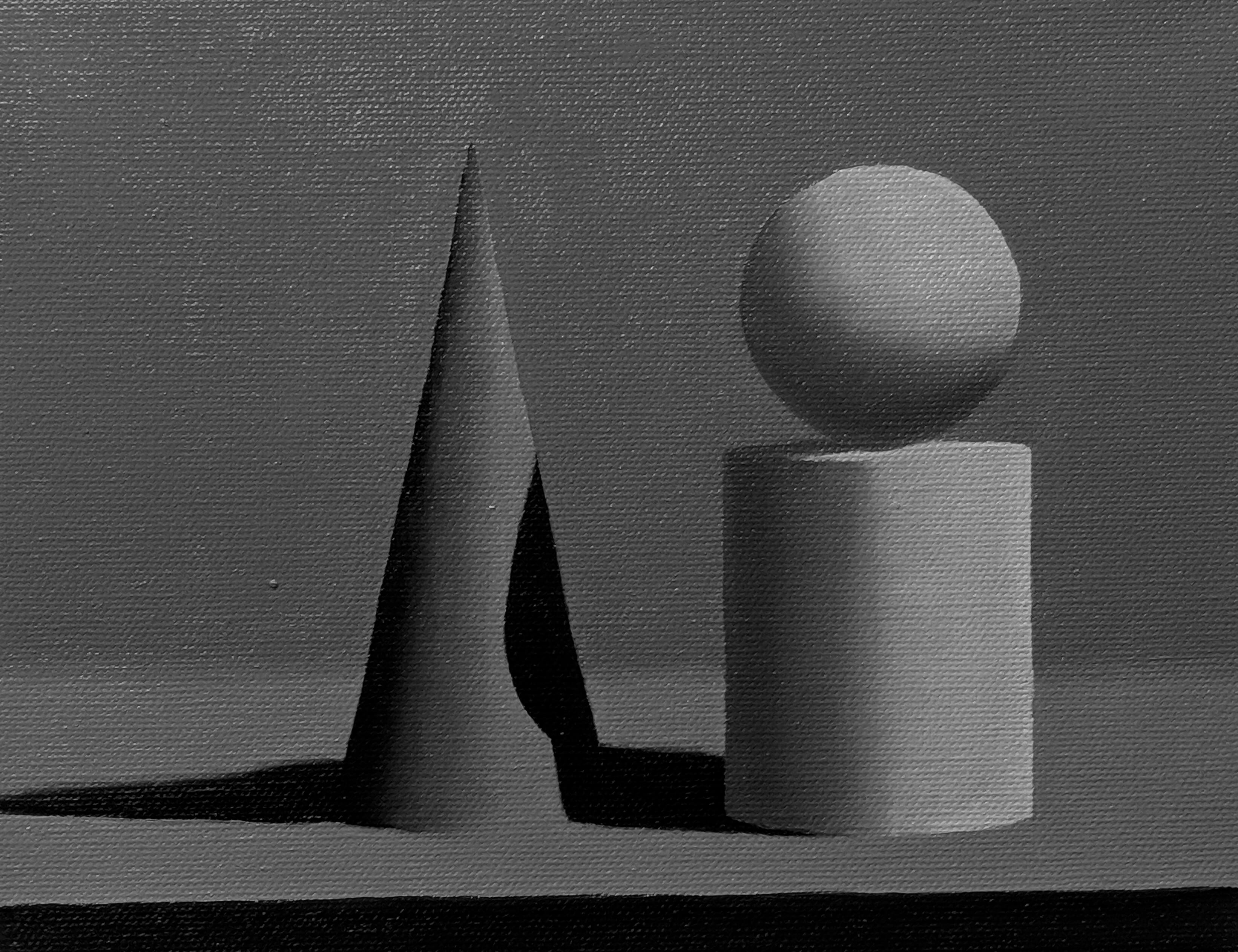
If edges are handled properly, even the most simple painting can have dimension and elegance. (Painting by Evolve student Marta L.)
Edge
Edges are another important piece of the painting process. Edges create the shapes we see, they explain form, and they can make or break a painting. From the very first exercise in Evolve, students are taught to carefully handle their edges. Without care for edges in your paintings, the entire piece will suffer.
There are two types of edges that Evolve students consider: gradients and sharp edges. Gradients are a gradual transition from light to shadow and express the form of an object. A soft, cleanly painted gradient creates the illusion of a three-dimensional shape. The ability to paint both large, sprawling transitions and small, tight changes from light to shadow is an important tool for an artist.

An example of beginning gradients and sharp edges within the Evolve program.
Sharp edges are exactly as they sound. These razor-sharp marks are used to define outer edges, explain cast shadows, and bring focus to a painting. When sharp edges wobble or waiver, they eliminate any focus or believability in a painting and are less than convincing.
Gradients and sharp edges also are crucial to maintaining the proportions of a painting. Along with proportions, properly placed and controlled edges bring focus and clarity to a painting, keeping it as realistic as possible. Even a beginner’s painting done with only four values, and no reflections or highlights can be beautifully realistic if the edges are handled properly.
Edges are an essential part of the oil painting process, and without this moving part executed properly, the painting will fall flat.
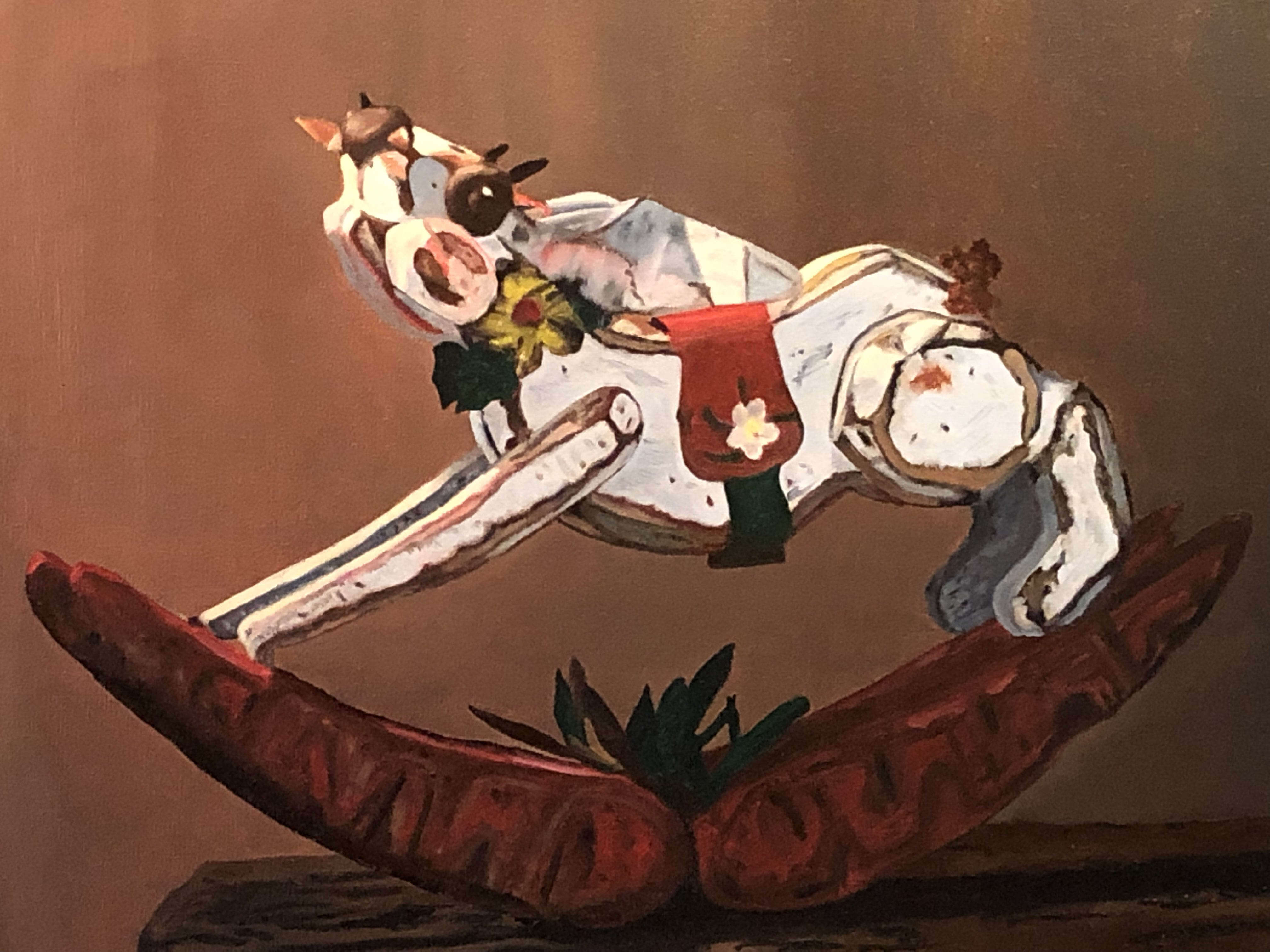
Color, edge, and value all working together in a beautiful, finished painting by Evolve student Jennifer R.
Color
The final moving part of an oil painting is color. Though Evolve students start their painting education in grayscale, they soon move into color, adding another moving part to their work. Color brings another layer of realism to a painting, and much of learning how to utilize color comes from paint mixing and experimenting to find correct color combinations to express what you see before you.
Color has both hues and saturation, hue referring to the color itself, like green or red, and saturation referring to how intense that color is. Learning to identify how to mix those color characteristics and apply them to painting is an essential part of a student’s journey.
Color brings an intensity and realism to painting, and when used properly elevates a painting and brings it to life.
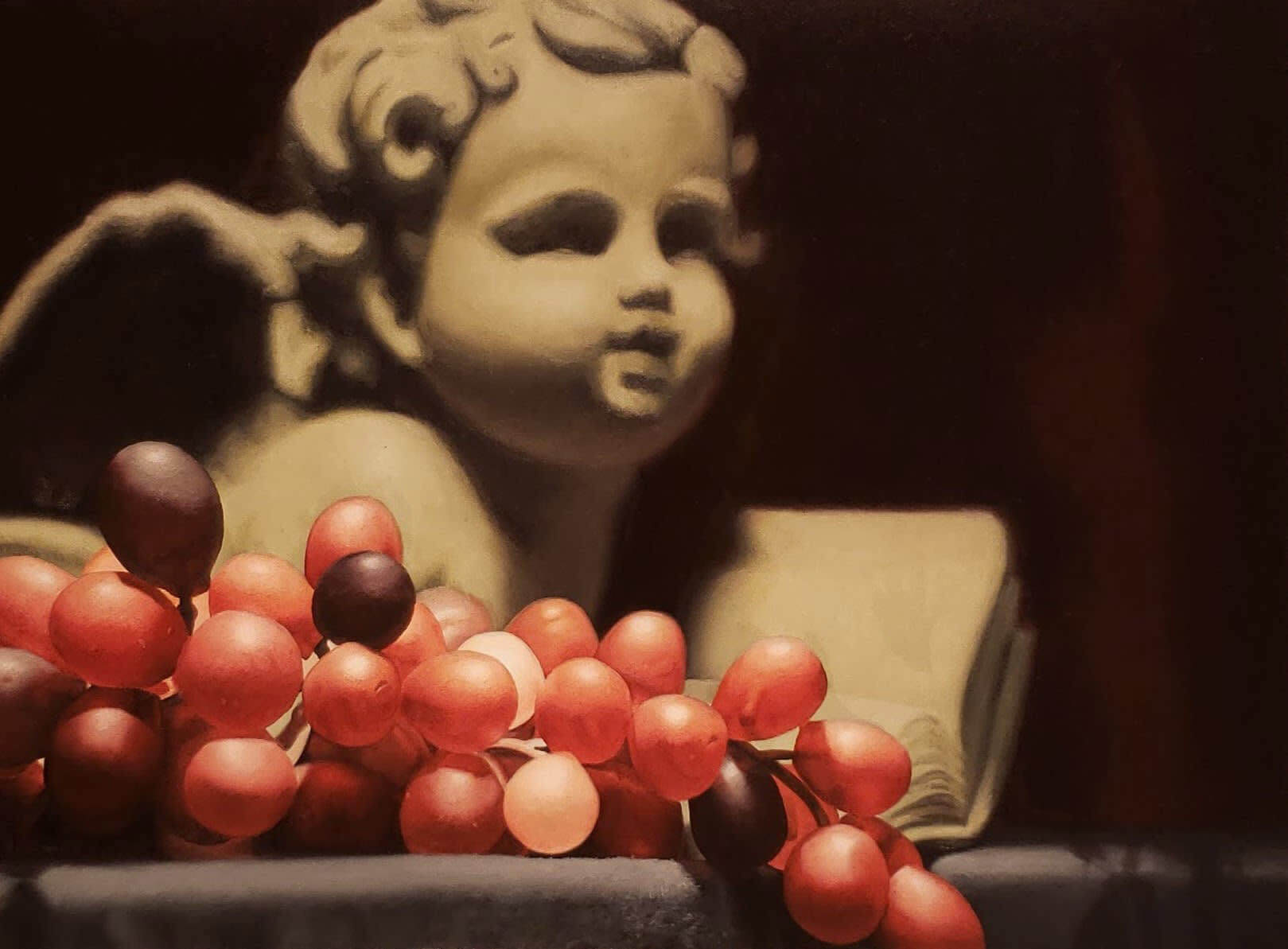
A beautiful example of the moving parts of an oil painting by Evolve student Sheila J.
Conclusion
Though it seems complex in theory, the oil painting process can be broken down into these three moving parts. Value, edge, and color bring realism and believability to a painting, and when used properly can create incredible work.
Even for the beginner working in grayscale, value and edge are essential. Without properly placed and executed value, the painting will not be rooted in reality. If it lacks sharp edges and correctly placed gradients, the proportions and dimensions will fall flat. And if color mixtures are improperly made or not carefully considered, even the most carefully painted work will suffer.
These three moving parts bring control, accuracy, and realism into your paintings, creating works of art that are convincing and lifelike.


